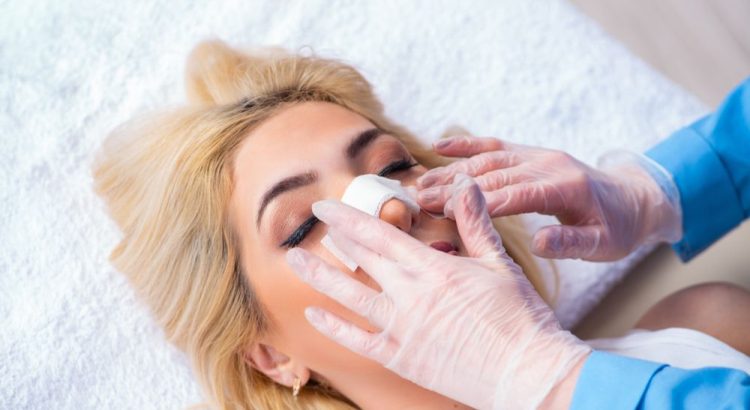Contents;
Immediate Post-Surgery Care
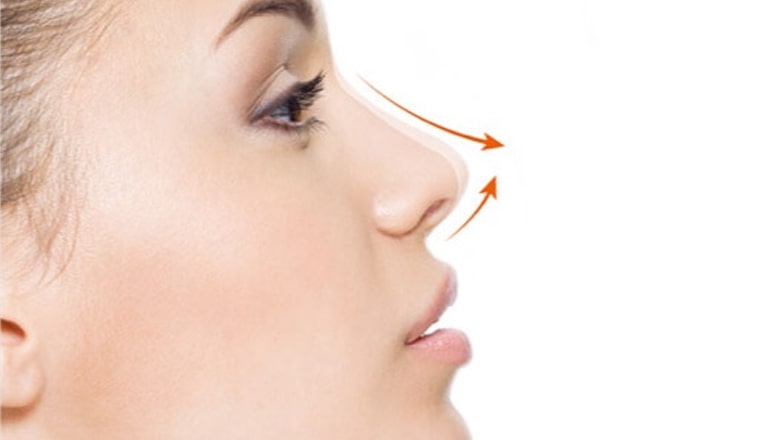
After undergoing rhinoplasty surgery, proper post-operative care is crucial for a successful recovery. The immediate post-surgery care begins as soon as the patient wakes up from anesthesia. It is important to have a designated caregiver or a reliable friend or family member to assist during this initial phase of recovery. Rhinoplasty surgery recovery involves following a few key steps to ensure optimal healing and minimize complications.
The first step in immediate post-surgery care is to control bleeding. Gently dab any residual blood or discharge with a clean cloth or tissue. It is normal to experience some bleeding and drainage in the first few hours after surgery. However, if the bleeding is excessive or persistent, it is essential to contact the surgeon immediately.
Pain management is another crucial aspect of immediate post-surgery care. Rhinoplasty surgery can cause discomfort and pain, which can be managed effectively with prescribed pain medications. It is important to take the medications as instructed by the surgeon and avoid excessive movement that could exacerbate pain.
Proper wound care is also vital during the immediate post-surgery period. The surgeon will provide specific instructions on how to clean and care for the incision site. It is important to keep the surgical site clean and dry to minimize the risk of infection. Following the surgeon’s guidelines for wound care can help promote a faster and smoother recovery process.
- Overall, the immediate post-surgery care after rhinoplasty is crucial for a successful recovery. It involves controlling bleeding, managing pain, and proper wound care. It is important to have a designated caregiver during this time to assist with daily activities and ensure compliance with post-operative instructions. Following proper immediate post-surgery care guidelines will contribute to a smoother recovery process and ultimately lead to satisfactory long-term results.
| Bleeding Control | Gently dab any residual blood or discharge with a clean cloth or tissue. |
| Pain Management | Take prescribed pain medications as instructed by the surgeon and avoid excessive movement. |
| Wound Care | Follow the surgeon’s instructions on cleaning and caring for the incision site to minimize the risk of infection. |
The First Few Days After Rhinoplasty
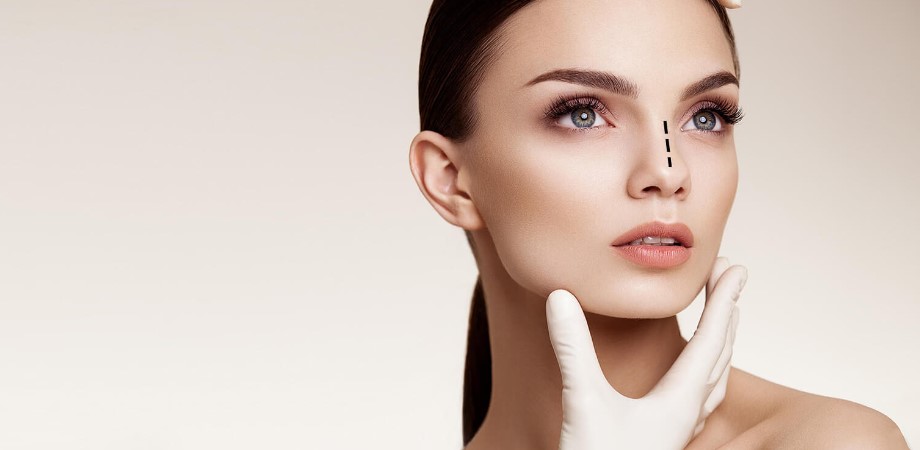
After undergoing rhinoplasty surgery, a patient’s journey to recovery begins. The first few days following the procedure are crucial for a successful healing process. Proper care and diligent adherence to post-operative instructions can greatly enhance the outcomes of rhinoplasty.
One of the most important aspects of immediate post-surgery care is managing pain and discomfort. Patients may experience varying degrees of pain, swelling, and bruising, which can be controlled through medication as prescribed by the surgeon. It is crucial to follow the recommended dosage and timing to ensure adequate pain management.
Returning to normal activities should be done with caution during the first few days after rhinoplasty. Strenuous activities, such as heavy lifting or intense exercise, should be avoided to minimize the risk of complications or setbacks in the healing process. It is essential to listen to the body’s signals and gradually resume activities as advised by the surgeon.
- Proper rest is essential during the first few weeks of recovery after rhinoplasty. It is important to allocate ample time for rest and sleep to facilitate healing. Elevating the head while sleeping can help minimize swelling and discomfort. Sleeping on the back is also recommended to avoid unnecessary pressure on the nose.
- Minimizing swelling and bruising is crucial for a smooth recovery. Applying cold compresses to the nose in short intervals can help reduce swelling and alleviate discomfort. However, it is important to follow the surgeon’s instructions regarding the frequency and duration of cold compress use.
- Understanding the long-term results and final recovery timeline is essential for patients undergoing rhinoplasty. While the initial swelling and bruising may subside within a few weeks, it can take several months for the final results to become apparent. Patience and realistic expectations are key during this phase.
| Immediate Post-Surgery Care | The First Few Days After Rhinoplasty | Managing Pain And Discomfort |
|---|---|---|
| Returning To Normal Activities | The First Few Weeks Of Recovery | Minimizing Swelling And Bruising |
| Long-Term Results And Final Recovery |
The first few days after rhinoplasty surgery require careful attention and adherence to post-operative instructions. By managing pain and discomfort, gradually returning to normal activities, prioritizing rest, and minimizing swelling and bruising, patients can ensure a smoother recovery process. Understanding the long-term results and final recovery timeline is also crucial for maintaining realistic expectations throughout the healing journey.
Managing Pain And Discomfort
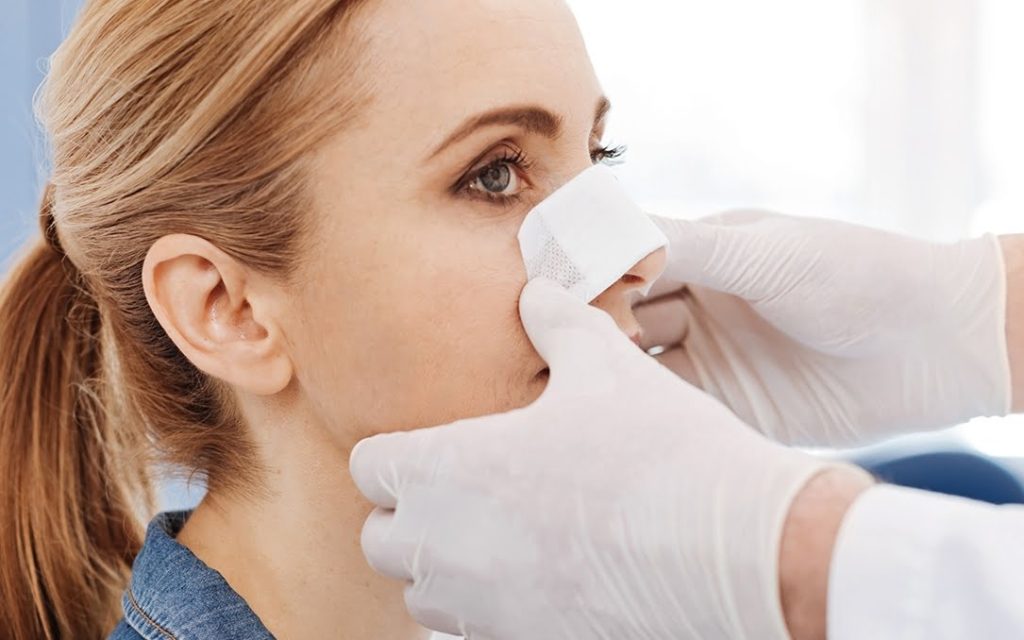
One of the most common concerns for patients undergoing rhinoplasty surgery is the pain and discomfort they may experience during the recovery process. While rhinoplasty is generally a safe procedure, it is important to be prepared for the potential discomfort that may occur afterwards. Fortunately, there are several steps you can take to manage your pain and ensure a more comfortable recovery.
1. Follow your surgeon’s post-operative instructions: Your surgeon will provide you with specific guidelines to follow after your rhinoplasty surgery. This may include taking prescribed pain medication, applying cold compresses to reduce swelling, and avoiding certain activities that could interfere with your healing process. It is important to follow these instructions carefully to minimize your pain and discomfort.
2. Take pain medication as prescribed: Your surgeon may prescribe pain medication to help manage any discomfort you may experience during your recovery period. It is important to take the medication as directed and not to exceed the recommended dosage. If you are concerned about any potential side effects or interactions with other medications, be sure to consult with your surgeon.
3. Apply cold compresses: Cold compresses can be an effective way to reduce swelling and relieve pain after rhinoplasty surgery. Applying a cold compress to the surgical area for short periods of time can help alleviate discomfort. Be sure to use a clean cloth or ice pack wrapped in a thin towel to avoid direct contact with your skin.
| Additional Tips |
|---|
|
|
|
By following these tips and closely following your surgeon’s instructions, you can effectively manage pain and discomfort during your rhinoplasty surgery recovery. Remember, it is normal to experience some level of discomfort after the procedure, but with proper care and patience, you will soon be on your way to enjoying the long-term results of your rhinoplasty.
Returning To Normal Activities

Returning to normal activities after rhinoplasty surgery can be an exciting and rewarding time. However, it is important to take certain precautions and follow your surgeon’s instructions to ensure a smooth and successful recovery. While each patient’s recovery may vary, there are some general guidelines that can help you get back to your daily routine with ease.
1. Take it slow and listen to your body: It is important to gradually increase your activity levels and not push yourself too hard too soon. Your body needs time to heal, and overexertion can lead to complications. Pay attention to any discomfort or pain, and modify your activities accordingly.
2. Avoid strenuous activities: During the initial recovery period, it is important to avoid any activities that may increase your heart rate or blood pressure. This includes rigorous exercise, heavy lifting, or any activity that could put strain on your nose. Consult with your surgeon regarding specific timelines and restrictions.
3. Be mindful of your surroundings: While it is important to resume your normal activities, it is also crucial to be cautious and aware of your surroundings. Avoid crowded places, rough play, or any activities that could put you at risk of injury. Protect your nose from accidental bumps or hits by using protective gear, such as a splint or mask, if advised by your surgeon.
4. Follow your aftercare routine: Your surgeon will provide you with a detailed aftercare routine, which may include gentle cleaning, nasal irrigation, and medication. It is important to adhere to these instructions strictly to promote proper healing and minimize the risk of complications.
5. Attend follow-up appointments: Regular check-ups with your surgeon are necessary to monitor your progress and address any concerns or questions you may have during the recovery process. These appointments also allow your surgeon to assess the long-term results of your rhinoplasty surgery.
- Returning to normal activities after rhinoplasty surgery require patience and careful planning. By following these guidelines and consulting with your surgeon, you can ensure a successful recovery and enjoy the beautiful results of your rhinoplasty.
| Tips for Returning to Normal Activities | |
|---|---|
| 1. | Take it slow and listen to your body |
| 2. | Avoid strenuous activities |
| 3. | Be mindful of your surroundings |
| 4. | Follow your aftercare routine |
| 5. | Attend follow-up appointments |
The First Few Weeks Of Recovery
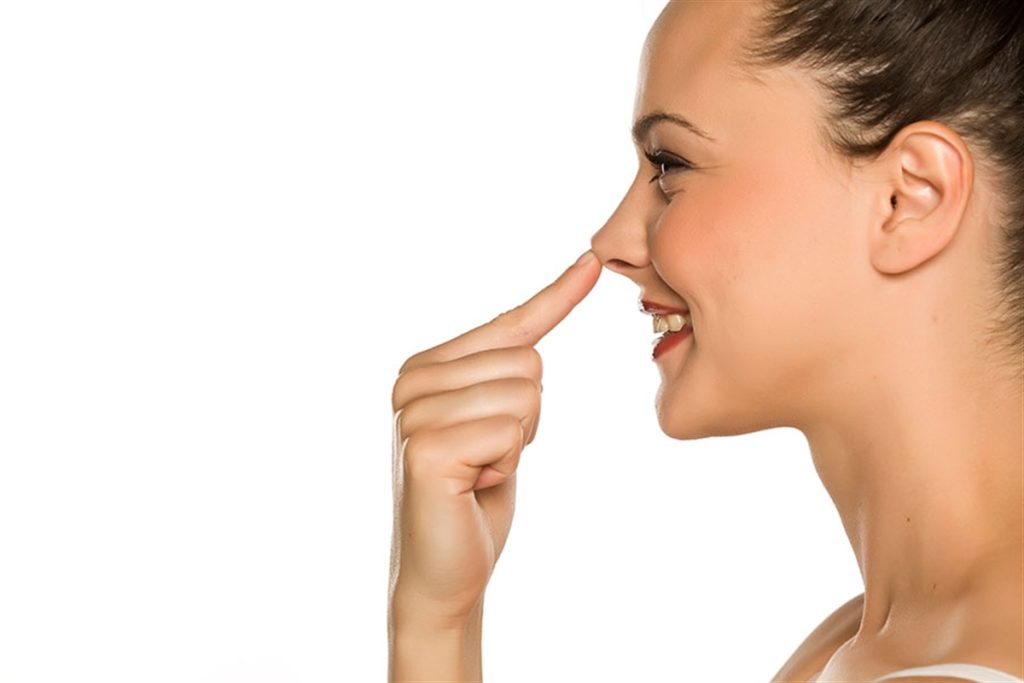
Rhinoplasty, commonly known as a nose job, is a surgical procedure that reshapes the nose to improve its appearance or function. After undergoing rhinoplasty surgery, proper recovery and care are essential to ensure the best possible results. The first few weeks following the procedure are crucial for the healing process, as the nose needs time to adjust to its new shape. In this blog post, we will discuss the important aspects of the first few weeks of recovery after rhinoplasty surgery.
Initial Rest and Recovery: Immediately after the surgery, it is important to rest and take it easy. Your surgeon will provide specific instructions regarding post-operative care, such as pain medication, antibiotics, and tips to minimize swelling and bruising. It is important to follow these instructions diligently to aid in the healing process and ensure a smooth recovery.
Managing Swelling: Swelling is a normal part of the recovery process after rhinoplasty surgery. To help reduce swelling, your surgeon may recommend using cold compresses on the nose and keeping your head elevated while sleeping or resting. It is important to avoid any activities that may increase blood flow to the face, such as strenuous exercise or bending over, as these can prolong swelling and delay the healing process.
Monitoring Bruising: Bruising is also a common side effect of rhinoplasty surgery. It typically resolves within a week or two, but everyone heals at their own pace. During the first few weeks of recovery, it is essential to monitor any bruising and report any concerns to your surgeon. They will be able to provide guidance on how to manage bruising and ensure proper healing.
| Weeks 1-2: | Weeks 3-4: | Weeks 5-6: |
|---|---|---|
|
|
|
|
|
|
|
|
|
Follow-Up Appointments: During the first few weeks of recovery, you will have follow-up appointments scheduled with your surgeon. These appointments are crucial for monitoring your progress, assessing any concerns, and ensuring proper healing. It is important to attend all scheduled appointments and follow your surgeon’s advice for optimal recovery.
Patience and Time: Keep in mind that recovery after rhinoplasty surgery takes time. While certain restrictions may be lifted after a few weeks, the complete healing process may take several months. Be patient with the results and remember that each individual heals at their own pace. It is important to follow your surgeon’s instructions, practice self-care, and allow your body the time it needs to fully recover.
In conclusion, the first few weeks of recovery after rhinoplasty surgery are critical for achieving the desired results. By following proper post-operative care instructions, managing swelling and bruising, attending follow-up appointments, and practicing patience, you can ensure a successful recovery and enjoy the long-term benefits of your rhinoplasty procedure.
Minimizing Swelling And Bruising
Minimizing Swelling and Bruising
After undergoing rhinoplasty surgery, it is common to experience some swelling and bruising around the nose and eyes. However, there are several steps you can take to help minimize these side effects and promote a faster recovery. One of the most effective ways to reduce swelling is to keep your head elevated. This can be achieved by using extra pillows to prop yourself up while sleeping or resting. Additionally, applying cold compresses to the affected areas can help reduce swelling and alleviate discomfort. However, be sure to wrap the ice pack in a cloth to protect your skin from direct contact.
Another useful tip for minimizing swelling and bruising is to properly manage your pain and discomfort. Your surgeon will likely prescribe pain medication to help you manage any post-operative pain. It is important to take these medications as prescribed and to avoid excessive physical activity during the healing process. Engaging in strenuous activities or heavy lifting can worsen swelling and prolong the recovery process.
Furthermore, it is crucial to follow your surgeon’s instructions regarding post-surgery care. This may include avoiding certain foods and beverages, such as alcohol, which can contribute to increased swelling. Maintaining a balanced diet rich in fruits and vegetables can also aid in minimizing swelling and promoting faster healing.
- Key Points to Remember:
- Elevate your head while resting to reduce swelling.
- Apply cold compresses to the affected areas.
- Manage pain and discomfort with prescribed medications.
- Follow your surgeon’s instructions for post-operative care and diet.
| Day | Activity Levels | Swelling and Bruising |
|---|---|---|
| 1-2 | Rest and elevate head | Moderate swelling and bruising |
| 3-7 | Gradual increase in activity | Swelling and bruising start to fade |
| 8-14 | Resume light activities | Minimal swelling and bruising |
| 15+ | Resume normal activities | Almost no swelling or bruising |
Long-Term Results And Final Recovery
After undergoing rhinoplasty surgery, it is important to understand the long-term results and final recovery process. Rhinoplasty, also known as a nose job, is a surgical procedure that can improve the appearance and function of the nose. It is natural to be curious about the final outcome and how long it takes to fully recover from the surgery. In this blog post, we will explore the long-term results of rhinoplasty and the steps involved in the final recovery period.
One of the key aspects of the long-term results of rhinoplasty is understanding that the final outcome may not be immediately apparent. It takes time for the swelling to fully subside and for the nose to settle into its new shape. Patients should have realistic expectations and understand that their nose will continue to change and refine over a period of several months following the surgery.
The final recovery period after rhinoplasty can vary from patient to patient. Generally, the initial phase of recovery lasts around one to two weeks, during which patients may experience bruising, swelling, and discomfort. It is important to follow all post-operative instructions provided by the surgeon and to take any prescribed medications as directed. This will help manage pain and discomfort, and promote a smooth healing process.
- Avoid strenuous activities and exercises that may put pressure on the nose.
- Avoid blowing your nose excessively or forcefully.
- Sleep with your head elevated to reduce swelling.
During the first few weeks of recovery, it is important to take it easy and avoid any activities that may disrupt the healing process. Patients should avoid wearing glasses, sunglasses, or other accessories that rest on the nose, as they can interfere with the healing process and potentially cause complications. It is also important to protect the nose from any accidental bumps or injuries during this time.
As the weeks progress, patients can gradually return to their normal activities, including exercise and sports. However, it is still important to be cautious and avoid any activities that may put excessive strain or pressure on the nose. It is also important to continue following the post-operative care instructions provided by the surgeon to ensure optimal healing and long-term results.
Minimizing swelling and bruising is an essential part of the recovery process. Patients can help reduce swelling by applying cold compresses to the nose and keeping their head elevated. It is important to avoid hot showers, saunas, and other activities that may increase blood flow to the face, as this can prolong swelling and bruising. Additionally, following a healthy diet and staying hydrated can aid in the healing process.
In conclusion, the long-term results and final recovery period after rhinoplasty are important aspects to consider. Understanding that the final outcome may take time and the necessity of following the post-operative care instructions are crucial. By taking proper care of your nose during the recovery process, you can achieve optimal results and enjoy the benefits of your rhinoplasty surgery.
Frequently Asked Questions
1. How long does the immediate post-surgery care usually last?
The immediate post-surgery care typically lasts for a few hours after the rhinoplasty procedure.
2. What can I do to manage pain and discomfort during the first few days after rhinoplasty?
To manage pain and discomfort, your surgeon may prescribe pain medication and recommend cold compresses, keeping your head elevated, and avoiding strenuous activities.
3. When can I expect to return to normal activities after rhinoplasty?
The timeline for returning to normal activities can vary, but most patients are able to resume their usual routine within 1-2 weeks after the surgery.
4. How can I minimize swelling and bruising during the recovery period?
To minimize swelling and bruising, it is important to follow your surgeon’s instructions, which may include using cold compresses, avoiding certain foods and medications that can increase swelling, and keeping your head elevated while sleeping.
5. What can I expect during the first few weeks of recovery after rhinoplasty?
During the first few weeks of recovery, you may experience some swelling, bruising, and congestion. It is important to attend follow-up appointments with your surgeon to monitor your progress.
6. How long does it take to see the long-term results and complete recovery after rhinoplasty?
It can take several months to a year to see the final results of your rhinoplasty. Complete recovery and resolution of any residual swelling or bruising may take several weeks to months.
7. What can I do to ensure the best possible long-term results after rhinoplasty?
To ensure the best possible long-term results, it is crucial to follow your surgeon’s aftercare instructions, avoid any activities or behaviors that could potentially damage your nose, and maintain a healthy lifestyle.
